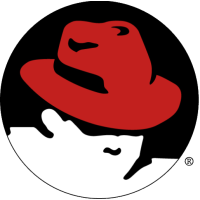Red Hat is the open source company of the decade


So it's time to ask what makes you a leader in this business. How do you generate the most money from free, visible software. How do you stay ahead of a pack that has access to the same raw material you do?
The answer turns out to be the same as in any business. Scaled resources. Just as the big mining company is going to have the biggest machines, you scale programming resources to bring in the big bucks from open source software.
This is the lesson of Red Hat, my open source company of the decade.
Red Hat doesn't worry about rival CentOS getting corporate support from OpenLogic because OpenLogic doesn't bring the scaled resources Red Hat brings to the party.
Red Hat has about 1,500 developers, a division run out of Massachusetts, meaning it can evaluate changes enterprises make to the system, incorporate what works best, keep the code base stable, and provide enterprise-grade support.
While most open source attention has been focused on the West Coast game of alliances, announcements, rumors and venture capital, Red Hat has been playing an East Coast game that's the tech equivalent of blocking-and-tackling.
The result is we wake up after a decade and find Red Hat has gone from a retail model to an enterprise model, with solid revenue streams, blue chip customers, and no serious drama.
What can you do with that? You can push into related technologies. For Red Hat, that means Java. Enterprises are distracted by the Sun-Oracle deal? Maybe they would like some JBOSS.
The key metric of success for Red Hat is mind share among people who willingly write big checks for support. The people we used to call mainframe customers aren't into flash and show.
This may not be the key in broader markets. When the checks get small and the customer counts ginormous sizzle matters.
But you can make a good living on the high end of the market, even if what you're selling is free, and one of the key questions for the next decade is how Red Hat will use the power it has earned.